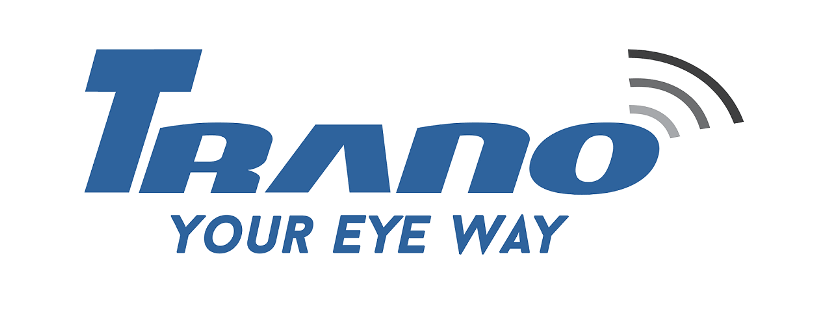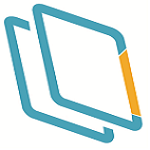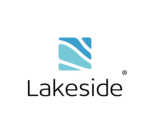Description
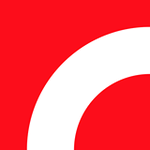
Oomnitza
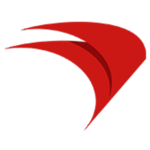
FileWave
Comprehensive Overview: Oomnitza vs FileWave
Oomnitza and FileWave are both technology management solutions, but they cater to somewhat different needs and markets. Below is a comprehensive overview of each:
Oomnitza
a) Primary Functions and Target Markets:
- Primary Functions: Oomnitza is an IT asset management platform designed to streamline and automate the lifecycle management of technology assets within an organization. Its core functionalities include asset tracking, inventory management, compliance reporting, and workflow automation. The platform supports the integration of various business processes across IT, HR, finance, and other departments, offering a centralized view of all hardware and software assets.
- Target Markets: Oomnitza primarily targets mid-sized to large enterprises that require robust asset management capabilities to manage complex infrastructure and tech investments. It is particularly appealing to industries such as technology, healthcare, finance, and education that have significant investments in IT infrastructure.
b) Market Share and User Base:
- Oomnitza operates in a niche segment of the broader IT asset management market. Its market share is more concentrated among enterprises that are looking for sophisticated and integrated asset management solutions. While Oomnitza continues to grow its user base, it remains a specialized tool compared to broad-scale IT management solutions like ServiceNow or Salesforce.
c) Key Differentiating Factors:
- Integration Capabilities: One of Oomnitza’s standout features is its ability to seamlessly integrate with a wide range of existing IT systems and tools, enabling comprehensive visibility and control over IT assets.
- Automation and Workflow: Oomnitza excels in its automation capabilities, allowing users to customize workflows to automate routine asset management tasks and processes.
- Focus on Cross-Departmental Collaboration: The platform is designed to facilitate collaboration across various departments, not just IT, linking asset information with financial and HR data for better decision-making.
FileWave
a) Primary Functions and Target Markets:
- Primary Functions: FileWave is an endpoint management software solution that provides comprehensive management for all devices within an organization, including Apple, Windows, and Android devices. Its primary functionalities include device management, software deployment, patch management, and remote control, all integrated into a single platform for unified endpoint management.
- Target Markets: FileWave targets educational institutions, small to medium businesses, and organizations with diverse device environments. It is particularly popular within the education sector for managing large fleets of devices used by students and faculty.
b) Market Share and User Base:
- FileWave has established a solid presence in markets requiring multi-platform device management, with significant penetration in educational institutions due to its strong support for Apple devices. It has a moderate share when compared to broader enterprise solutions like Microsoft Intune or VMware Workspace ONE, but it maintains a strong foothold within its niche.
c) Key Differentiating Factors:
- Cross-Platform Support: FileWave offers robust cross-platform support, making it appealing for organizations with a mix of Windows, MacOS, and mobile devices.
- Focus on Education Sector: The platform provides specific features tailored for educational institutions, such as Classroom Management tools, which contribute to its widespread adoption in schools and universities.
- Ease of Use: FileWave is frequently highlighted for its intuitive interface and ease of deployment, which helps organizations quickly implement comprehensive device management strategies without extensive overhead.
Comparative Insights
In summary, while both Oomnitza and FileWave provide IT management solutions, they serve distinct primary functions and markets. Oomnitza focuses on asset management and cross-department integration within larger enterprises, whereas FileWave provides endpoint management with a stronghold in the education market. Their user bases and market shares reflect these differences, along with their specialized features that cater to the specific needs of their target audiences.
Contact Info

Year founded :
2012
+1 866-985-0557
Not Available
United States
http://www.linkedin.com/company/oomnitza

Year founded :
1992
+49 21 154011690
Not Available
Switzerland
http://www.linkedin.com/company/filewave
Feature Similarity Breakdown: Oomnitza, FileWave
To provide a detailed feature similarity breakdown for Oomnitza and FileWave, we can consider the general functionality offered by asset management and endpoint management systems like these. Here is an overview:
a) Core Features in Common
-
Asset Management: Both Oomnitza and FileWave offer comprehensive asset management capabilities, allowing organizations to track their hardware and software assets effectively.
-
Inventory Management: Both solutions provide advanced inventory tracking to keep an accurate record of devices, software licenses, and other digital assets.
-
Software Deployment: Each platform supports the deployment of software across various devices, enabling remote installations and updates.
-
Reporting and Analytics: Both systems offer reporting and analytics tools to help organizations make data-driven decisions regarding their IT assets.
-
Cross-Platform Support: They support management across multiple operating systems such as Windows, macOS, and Linux.
-
Integrated Workflows: Workflow automation is a key feature in both platforms, facilitating automated processes for various management tasks.
b) User Interface Comparison
-
Oomnitza: Oomnitza's user interface focuses on simplicity and ease of use, providing a clean, modern design with dashboards that help visualize asset data effectively. Its UI is particularly designed to facilitate quick access to important asset information and streamline management processes.
-
FileWave: FileWave's interface is functional and designed for IT administrators, with a focus on providing detailed control over management tasks. It offers extensive configuration options, which might come with a steeper learning curve for some users but provides robust capabilities for those who require them.
c) Unique Features
-
Oomnitza:
- Integration Capabilities: Oomnitza is known for its extensive integration options with other enterprise systems such as ServiceNow, Jira, and Salesforce, making it an attractive solution for organizations looking to create seamless workflows across different platforms.
- Customizable Workflows: Offers highly customizable workflows which can be tailored for various business processes beyond traditional IT asset management.
-
FileWave:
- Unified Endpoint Management (UEM): FileWave emphasizes its UEM capabilities that extend to mobile devices and other endpoints. This feature set is beneficial for organizations looking to manage a diverse array of devices from a single platform.
- Patch Management: FileWave provides robust patch management capabilities which are crucial for securing diverse environments, offering detailed control over patch deployments and updates.
Both Oomnitza and FileWave cater to organizational needs in asset and endpoint management, but they are optimized for slightly different use cases. Choosing between them would depend on the specific needs regarding integration, device management, and customization.
Features

Not Available

Not Available
Best Fit Use Cases: Oomnitza, FileWave
Oomnitza and FileWave are both platforms designed to manage and optimize IT assets, but they cater to different use cases and business needs. Here’s a breakdown of where each might serve best:
a) Oomnitza
Best Fit Use Cases:
-
Enterprise IT Asset Management:
- Oomnitza excels in comprehensive IT asset management for large enterprises. It offers a robust solution for managing hardware, software, and SaaS applications across various departments and geographical locations.
-
Compliance and Lifecycle Management:
- Companies focused on compliance, auditing, and lifecycle management will find Oomnitza’s capabilities such as tracking asset usage, compliance checks, and automated workflows quite beneficial.
-
Technology-Intensive Sectors:
- Industries such as finance, healthcare, and technology that require stringent compliance and detailed asset lifecycle management can leverage Oomnitza’s features for audit trails and maintaining compliance.
-
IT Service Management (ITSM) Integration:
- Businesses that need to integrate IT asset management with existing IT service management tools can benefit from Oomnitza’s integration capabilities.
Industry Vertical and Company Size:
- Large Enterprises: Oomnitza is well-suited for large companies that have complex IT infrastructures and a need for detailed asset tracking and compliance management.
b) FileWave
Best Fit Use Cases:
-
Cross-Platform Unified Endpoint Management (UEM):
- FileWave specializes in cross-platform device management, making it ideal for businesses with a diverse range of devices and operating systems, including Windows, macOS, iOS, and Android.
-
Education Sector:
- FileWave has a strong presence in educational institutions, providing tools that support deployment, imaging, and management of devices across school districts and universities.
-
SMBs with Diverse Device Needs:
- Small to medium-sized businesses with a wide variety of devices benefit from FileWave's ability to manage these endpoints efficiently.
-
Remote Work Environments:
- Companies that support a remote workforce can use FileWave’s capabilities in software distribution, patch management, and security compliance to manage widely dispersed devices.
Industry Vertical and Company Size:
- Education and SMBs: FileWave is optimized for educational institutions and small to medium-sized businesses where managing a variety of devices and operating systems is crucial.
Conclusion
- Oomnitza targets larger enterprises with complex IT environments needing detailed asset management, compliance, and IT service integration. It is particularly suited for industries with strict regulatory requirements.
- FileWave is better suited for environments requiring robust cross-platform endpoint management, making it ideal for educational institutions and SMBs that require seamless device management across different platforms.
Both platforms offer unique strengths and cater to different niches based on company size, industry requirements, and specific operational needs.
Pricing

Pricing Not Available

Pricing Not Available
Metrics History
Metrics History
Comparing teamSize across companies
Conclusion & Final Verdict: Oomnitza vs FileWave
Conclusion and Final Verdict for Oomnitza vs FileWave
When evaluating Oomnitza and FileWave, understanding the specific needs and context of your organization is crucial. Both products offer robust features, but their suitability can differ based on factors like the size of the organization, the industry, and specific asset management needs.
a) Overall Value
Best Overall Value: Oomnitza
Oomnitza is often recognized for offering a comprehensive asset management solution that integrates well with a wide range of other enterprise systems. Its strong suit lies in its ability to manage assets across multiple domains, including IT, HR, and finance, providing a holistic view of an organization's asset landscape. This makes it particularly valuable for larger organizations with varied asset management needs.
b) Pros and Cons
Oomnitza:
- Pros:
- Integration Capability: Excellent integration with a variety of enterprise systems (ServiceNow, Workday, etc.).
- Comprehensive Asset Management: Manages a wide range of assets effectively, including IT equipment, mobile devices, and non-IT assets.
- Scalability: Scales well with growing organizations and can handle complex asset management needs.
- Cons:
- Complexity: Can be complex to implement and configure due to its wide array of features.
- Cost: Higher initial investment compared to other solutions.
FileWave:
- Pros:
- Unified Endpoint Management: Strong capabilities in managing and securing devices (both Mac and Windows) across a network.
- User-Friendly: Known for an intuitive interface that simplifies deployment and management tasks.
- Cost-Effective: Generally more affordable for smaller to medium-sized organizations.
- Cons:
- Limited Scope: Primarily focused on endpoint and device management rather than broader asset management.
- Integration Limitations: May not integrate as seamlessly with other enterprise systems as Oomnitza does.
c) Recommendations
-
For Large Enterprises:
- If your organization is large and requires comprehensive asset management integrated across multiple departments, Oomnitza is likely the better choice. Its ability to provide insights across a wide range of assets can optimize operational efficiency.
-
For Small to Medium Businesses (SMBs):
- FileWave can be ideal if the primary need is robust device and endpoint management at a more affordable cost. It provides all the necessary features with ease of use, making it suitable for organizations without extensive IT resources.
-
For Industries with Specific Compliance Needs:
- Evaluate the compliance features each offers. Oomnitza's broader scope may be beneficial for industries with rigorous compliance and auditing requirements.
-
Integration with Existing Systems:
- If your organization uses enterprise systems heavily, consider the integration capabilities of Oomnitza. Conducting trials or seeking demonstrations might provide useful insights into how well each product will fit into the current system architecture.
Ultimately, the decision should be based on the specific requirements of your organization, the complexity of your asset management processes, and budgetary considerations. Testing both systems in a pilot setup could also provide clear insights into which solution best fits your needs.
Add to compare
Add similar companies
